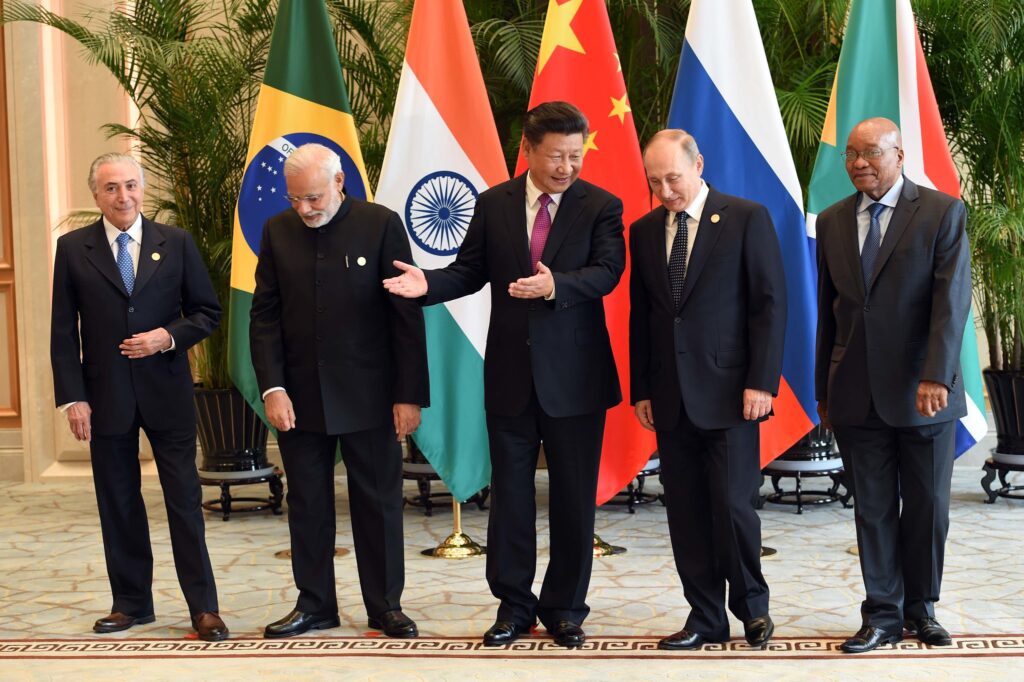
by Huma Rehman
The recent border agreement between India and China marks a significant diplomatic breakthrough, especially considering the heightened tensions between the two sides following the Galwan Valley clash in 2020. Reached after years of negotiations to resolve a military standoff that began in eastern Ladakh, the agreement is a testament to the complex yet critical nature of bilateral ties between the two Asian giants and appears to have thawed the otherwise fraught relationship. The two countries held 21 rounds of corps commander level meetings seeking complete disengagement along the Line of Actual Control (LAC) and restoration of normalcy and peace. The pact allows for the resumption of patrols along the disputed border, enabling both states to underscore their territorial claims while ensuring adherence to the agreed terms.
While the triangular dynamics between India, China, and Pakistan have been complex, the India-Pakistan ceasefire in 2021 left India to largely focus on its standoff along the LAC and broader competition with China. The resolution of this border standoff indicates that India’s threat perception of China have shifted beyond a purely security calculus to focus on other considerations, such as the resumption of economic ties, and operate independently of its relationship with the United States. However, even though this agreement assuages India’s perceptions of a two-front threat, tensions between India and Pakistan will still persist.
Terms of the Agreement
The agreement includes provisions for both countries to withdraw troops from specific areas of contention along the LAC, to avert risks of any further confrontations. It also outlines structured patrolling arrangements, intended to maintain the status quo and prevent any unilateral changes to the LAC. The agreement also calls for a continuous monitoring system to verify the status of troop withdrawal and patrolling activities, outlining a framework for resolving any future disagreements or stand-offs through dialogue at various levels, from local military commanders to diplomatic channels. It also acknowledges that the broader territorial dispute remains unresolved and opens the door for continued diplomatic engagement to resolve these longstanding issues.
The timing of the announcement by India and China – just before both countries were set to attend the BRICS summit – is noteworthy. The subsequent meeting between Indian Prime Minister Narendra Modi and Chinese President Xi Jinping on the sidelines of the summit materialized their political alignment to ease tensions and pave the way for improved political and economic ties.

Impact on India’s Threat Perceptions
While there is a sense of relief that the standoff – which had escalated tensions and led to the loss of lives – has moved towards de-escalation, there is skepticism concerning the agreement’s durability, especially given Indian mistrust of Beijing due to previous India-China border disputes. Thus, the agreement might not necessarily indicate that India and China have completely moved past historical grievances, especially since the lack of detailed public information on the deal’s terms suggests that negotiations may still be ongoing.
However, overall, the agreement suggests a shift in India’s perception of China as a threat. A stabilized border frees up resources and fosters economic growth. China is India’s largest trading partner, and trade between the two countries surged from USD $65 billion in 2020 to over USD $118 billion in 2024. India relies on Chinese imports for industrial goods, electronics, machinery, and pharmaceuticals, highlighting the mutual economic reliance that complicates their outright rivalry. In fact, both states have signaled with this agreement that they prioritize pragmatic reasons to seek a temporary peace over strategic concerns. For China, it may diffuse some of the economic and diplomatic pressure from the unresolved conflict along the LAC coupled with a slowing domestic economy, real-estate challenges, and Western restrictions on Chinese goods. By easing relations with India, China also seeks to prevent New Delhi from imposing further restrictions on Chinese investments or hardening existing policies. The agreement signals to the West that bloc politics is rendered void when economic considerations come into play.
U.S. Factor and Triangular Dynamics
The border agreement poses a significant question as to its potential impact on the budding relationship between the United States and India. Since the early 2000s, the U.S.-India partnership has deepened, especially considering India’s participation in initiatives like the Quad and I2U2. Their cooperation in the realms of defense, technology, and economic issues reflects shared concerns over China’s regional assertiveness. Consequently, India’s agreement to this deal with China demonstrates India’s desire to bolster its economy, its self-confidence in taming its strong neighbor and securing its borders, and practicing an independent foreign policy from the United States. While India has indicated that it intends to keep working with the United States, its individual handling of its border crisis with China exhibits its desire to keep a multialigned foreign policy.
Although the United States applauded the pullback of Chinese and Indian forces from the border, it underlined that it had no role in resolving the India-China border dispute. Nonetheless, the improvement in the India-China relationship may also benefit the United States by reducing the risk of conflict in South Asia and allowing for Washington to focus on China’s role in other regions around the world.
What About Pakistan?
The India-China border agreement has a mixed impact on Pakistan. Reduced tensions between New Delhi and Beijing facilitate an environment of peace in the region, which bodes well for Islamabad. However, the success of India’s negotiations with China does not indicate a similar improvement in the India-Pakistan relationship. The possibility of any analogous border agreement on the LOC is fraught with challenges that are multifaceted and deeply entrenched, primarily revolving around territorial disputes over Kashmir and cross-border terrorism.
Despite Indian Foreign Minister Jaishankar’s recent visit to Islamabad for a conclave SCO meeting, his visit did not pertain to the bilateral relationship and has not shown any signs of purposefully engaging to resolve the Jammu and Kashmir dispute and other lingering bilateral issues. Strategically, India’s construction of the INS Varsha, the development of K-4 naval capabilities in the eastern coast, and its cooperation with the U.S.’s Indo-Pacific Strategy raises concerns for Pakistan’s strategic threat perceptions regardless of the border agreement. Nonetheless, reduced tensions on the LAC may ease India’s threat perceptions of a two-front challenge from China and Pakistan, which could indirectly suggest greater Indian appetite for enduring crisis risks on the LOC.
In conclusion, the recent India-China border agreement is a positive development in the short term that provides a framework for de-escalation and the resumption of normal patrolling activities. However, the long-term prospects for peace and stability will depend on continuous efforts to address the underlying issues and build a durable framework for conflict resolution and cooperation. The world awaits to see if this agreement will be a harbinger of a new era in India-China relations or just another interlude in a long-standing rivalry.
source : southasianvoices
